📚 Inside Contemporary Book Design with Kevin Barrett Kane & Emma Christine Hall
Book design ≠ graphic design: career insights, publishing know-how, and resources to get started.
This fall at Type Electives, two award-winning book designers—Kevin Barrett Kane and Emma Christine Hall—are teaching Contemporary Book Design, a 10-week course that explores the history, theory, and practice of making books.
Kevin Barrett Kane, type designer and senior book designer at University of California Press, has designed thousands of book covers and interiors since 2012. Emma Christine Hall, senior book designer at Zeitgeist, an imprint of Penguin Random House, is also an accomplished art director and graphic designer whose atypical publishing career has allowed her to work on a wide range of formats—from cookbooks and children’s books to puzzle books, card decks, and spellbooks. Together, they cofounded The Frontispiece in 2015.
Which came first—an interest in books or a career in graphic design?
KBK: My mom is a librarian, so books have always been a big part of my life. What’s strange, though, is that we never really had a large personal library (at least not to the extent that Emma and I have now), because, well, most books in the house were borrowed. It wasn’t until I entered the creative writing program at the University of Colorado that I started a book collection of my own.
When my book-buying habits began to outpace my reading, I recognized that my fascination was not only with words but also with the objects themselves. Around that time, I stumbled upon Robert Bringhurst’s Manual of Typographic Style, devoured it, and thus began my self-taught journey in book design. It sounds romantic, but I assure you it was anything but. I was plagued by dreams (waking and sleeping) of type, grids, and the “harmony” of the page for several years before I settled into the acceptance that I couldn’t possibly consume every piece of information about book making and that maybe I had learned enough to do it myself. Shortly after that, I got my first job at a publisher and the rest is history.
ECH: Truthfully I can’t remember which came first. I grew up in a creative and bookish household (aka nerdy). I also grew up in a family that didn’t believe that creatives could make money from their craft: my dad is a brilliant illustrator, set designer, and actor who went into the army. My mom was the first art director I ever met—she has extreme clarity of creative vision. Now she’s a speech language pathologist.
I was encouraged to be creative in everything I did except for planning my future career, and through several leaps in logic that I no longer understand that directed me toward language and books. After my undergrad I taught middle and high school English. I loved teaching. I loved books. I didn’t love the climate of education and I burned out very quickly. I now count myself among the many young teachers whom the system failed.
But I never stopped designing and creating. So much of teaching is formatting information in visually appealing, and memorable ways. You can see that in the slide decks we use in this course. It’s all design. So when I left teaching I had a portfolio of decks and worksheets. And a trauma response in the form of a can-do-it attitude that helped me learn InDesign. The first publisher to hire me specialized in can-do-it-ness and I designed over 100 books in less than 3 years, most of them highly complex. I learned a lot really quickly.
How do your different backgrounds—scholarly/academic vs. Big-5 trade publishing—shape your teaching styles?
KBK: The difference in our teaching styles comes down to something deeper than our current roles. I lean towards a dogmatic lecturer style that relies heavily on anecdote and precedent which is why I take on topics like the History of Book Design. Emma is a former K-12 educator with a passion for pedagogy so her approach is much more methodical. She’s entrusted with teaching hard skills in InDesign that are truly at the core of our course. I learn something new from her every time we co-teach.
ECH: Lots of great designers really struggle when laying out their first long-form design. For this course my goal is to demonstrate what can be done in these programs. You’re not going to retain everything we cover (which is a lot), but knowing that something is possible is a great place to start when looking for answers on your own.
What kinds of questions do you ask yourself when starting a new project?
KBK: Book design is, at the end of the day, a combination of product design and UI/UX, so understanding the needs of the publisher or individual author you’re working with is a must. The questions I need answered before beginning a project are:
What is the intended audience?
Have you identified an ideal look and feel? Trim size? Page count? Format?
How difficult is the author? Do they have an agent? Do they care what their cover looks like?
What are the comparative titles in the genre we’re competing with?
Who are the stakeholders I am accountable to and when will they get involved?
ECH: BUDGET for any art program. Understanding the audience is the cornerstone of a successful book design. In my line of publishing I am given a wide variety of audiences in a given week, not all of which I can relate to personally, so being impartial and nonjudgemental is a key part of my work. I ask myself questions like:
How are other products and outlets successfully reaching this audience (importantly, these products don’t have to be books and often aren’t)?
How do these readers view themselves? What do they want to be told about themselves through the content and design of this book?
What is the visual language being used to communicate to this audience that a product is intended for them and understands their values?
Can you share a project you’re especially proud of and what made it meaningful?
KBK: If I had to pick one, Sato Moughalian’s Feast of Ashes comes to mind. In addition to designing the cover and the image-heavy interior pages, I also designed a custom map for the frontmatter and endpages based on David Ohanasisian’s sketches. I spent over 80 hours on this project alone and it is one of my favorites. I am so proud of it that anytime I have a copy of it around I end up gifting it to someone. I always regret this, because replacing it in my library is expensive every time!
ECH: This one is so recent it’s only available for pre-order, but it has to be Ultimate Origami Challenge Kit for Kids 8-12. Not only am I very happy with how the entire package turned out, I think this book is a good example of what I specialize in as a book designer. It’s a high complexity layout with fully illustrated step-by-step directions and photos for every model in the book.
I wasn’t just designing, a lot of my work on this title was art direction. I created an art brief providing photo references, written descriptions, mark ups, annotations, and mood boards for the talented Kate Francis who illustrated over 500 spots for the interior. I planned and directed a 2-day photoshoot with the equally talented Amanda Gomez. I collaborated for so many months with the editor, Caroline Lee, going back and forth on edits to illustrations, layout, text. The two of us folded all of the models that appeared in the photoshoot. It was a labor of love, and I’m very proud of the final product. I hope it sells like hot cakes.
How do you balance client guidelines with your own creative instincts?
ECH: Carefully? I take pause with “creative instincts.” It may be controversial, but I believe in justifying my work—not because I don’t think the work can speak for itself, but because I don’t assume that my client and my reader are the same type of person. Nor do I assume that my client will always understand the best design solutions for their reader.
In this course we go over some examples from my backlist of how I’ve walked clients through understanding their reader’s visual preferences based on research, and a lot of my process removes me and my creative instincts from the discussion. They’re still happening, they’re just not the focus.
KBK: I work a bit more instinctually than Emma at times, especially for the onslaught of scholarly monographs that cross my desk—there simply isn’t the time to think! But when the big books come along, which they do more and more these days, I follow much of Emma’s process. Research has to be the foundation of everything we do.
What inspired the design of this 10-week structure, and how does it serve intermediate-to-advanced learners?
KBK & ECH: We specifically focused on skills and theory we thought a book designer would need to work in the contemporary bookmaking landscape. We do not spend any time on InDesign basics and dive directly into intermediate and advanced topics. Students will walk away with the skills necessary to professionally typeset texts of moderate to advanced complexity, and more confidence in their approach to cover and mechanical design. They also leave with an invaluable number of resources specifically designed for this course, including class recordings, personalized feedback on their work, handouts and exclusive resources including files we’ve built for their use.
We do our best to respond to the needs of every student and will break out into smaller groups when specific topics are requested. For this reason, every CBD workshop is a bit different.
What advice would you give someone just starting out in book design?
ECH: The best way to start out in book design is to start designing books. That is part of our reason for this longer course format for CBD, we wanted our students to walk away with a completed book and print-ready files.
KBK: I often tell students in the first week: “bring your own personal talents and interests into book design and you will find more overlap than not.” The special thing about books is that they cover every subject. In my career as a young book designer, I learned quickly that my interest was in book design itself, and so I read and emulated the work of other book designers. But for someone obsessed with photography who happens to be taking a 10-week book design course, I’d encourage them to seek out books about photography as inspiration and to start designing books like those. Always remember, books are the single greatest technological revolution and have had more impact than any other artifact in the human world (yes, more than the internet! FIGHT ME.), so there is plenty, PLENTY to look to for inspiration.
What does your desk typically look like?
KBK: In general: the busier, the messier. I have a digital workspace and an analog one. At my digital station, I have a laptop, monitor, as well as a numerical keypad and trackpad, both of which I find essential to digital book design. At my analog station, there is lots of tracing paper, a large collection of rulers and straight edges, a sewing machine and lots of mark-making tools. Whatever station I’m working at, my favorite Blackwing Slate A5 dot-grid Notebook and red and black Pilot Fineliners are never far from reach.
ECH: Unfinished? My office is our next home project so it’s a bit neglected at the moment. On a typical day my desk has lots of sticky notes of lists, a random assortment of pens and markers, a stack of relevant books to my current projects, usually comp titles or similar formats, underneath the floating bed for our cat in the corner where he sleeps for most of the day when he isn’t trying to reclaim his rightful spot on the keyboard.
What brings you joy these days?
KBK: Our home in Western Colorado that we bought last year is a constant source of solace and hands-on projects. Our two fur babies, Joni and DC, provide necessary cuddles upon request. We enjoy a really vibrant community in our chosen home with plenty of family dinners, group activities on-dirt and in-water, and an annual Halloween Party that has become a thing of legend.
ECH: We have 500+ sqft of raised garden beds and they’re beautiful and chaotic and they feed us. This past weekend our 3 year old nephew just harvested the potatoes he planted with us this spring and that was a pretty magical moment.
Favorite type/design resources?
KBK: Of the many books on my bookshelf that I reach to, I find I am most often pulling down Joep Pohlen’s Letter Fountain (sadly, out of print) and Paul McNeil’s Visual History of Type. For cover design inspiration, I constantly check in on I Need A Book Cover, created by Zoe Norvell. It’s filled a huge vacuum or space online for an updated book cover repository that isn’t Pinterest, following the discontinuation of Book Cover Archive.
ECH: You can’t go wrong with Cover by Peter Mendelsund, especially when the well is running dry. According to my recent browser history: Fonts In Use, The Public Domain Review, RawPixel’s Public Domain Collection. I’m currently living large at work with access to the enterprise version of Monotype and I don’t know if I can go back. This is not an ad. It’s the most functional font manager I’ve used and I like the interface.
Curious about book design? Registration is still open for Kevin & Emma’s Contemporary Book Design course this fall. Share this newsletter with fellow creatives who might be interested!
✏️ See what past students have created.
Kevin’s website: www.kevinbarrettkane.com
Emma’s website: www.emmachristinehall.com
Interview conducted on August 20, 2025. Edited by Kate Ragosta.



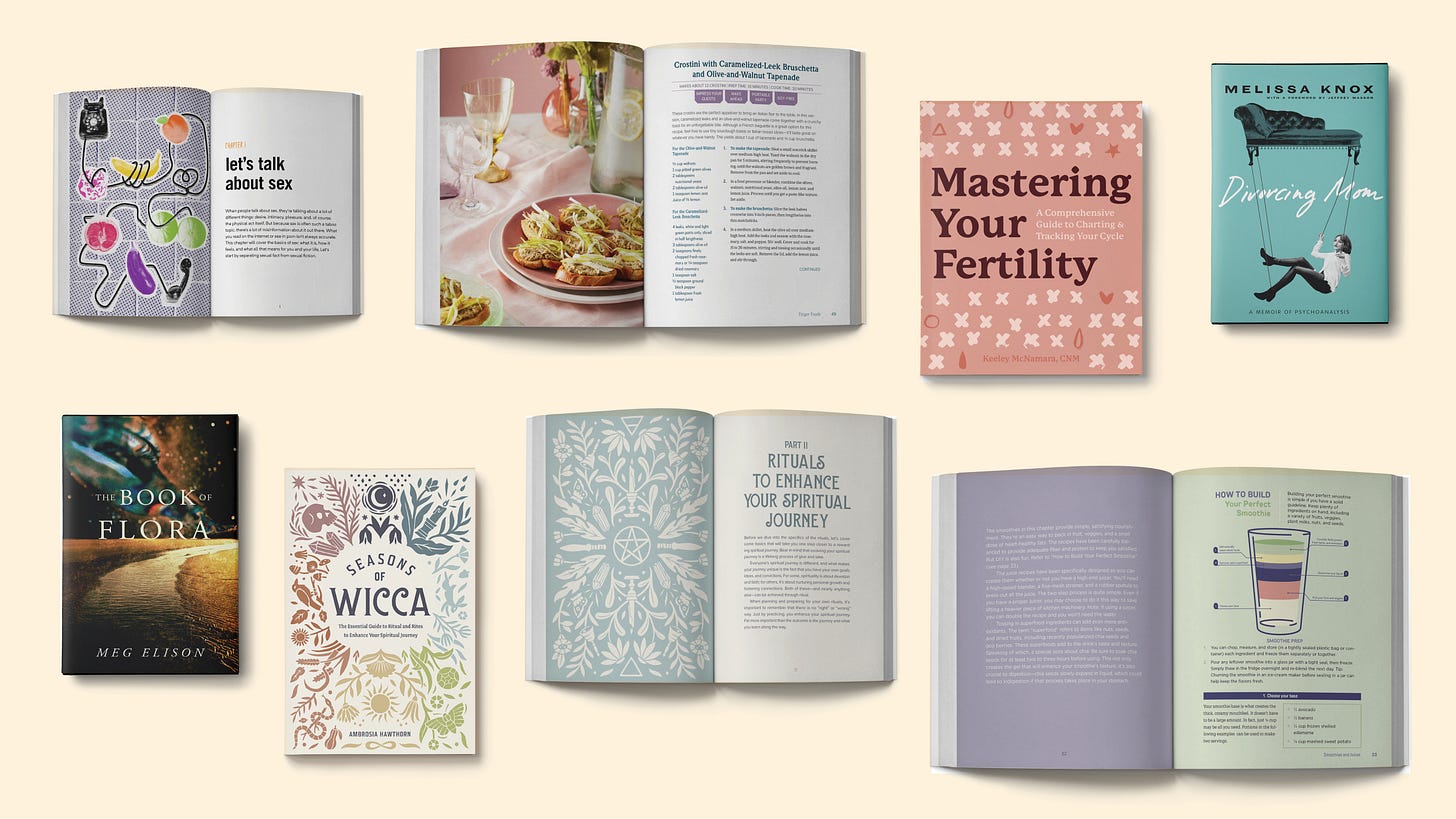
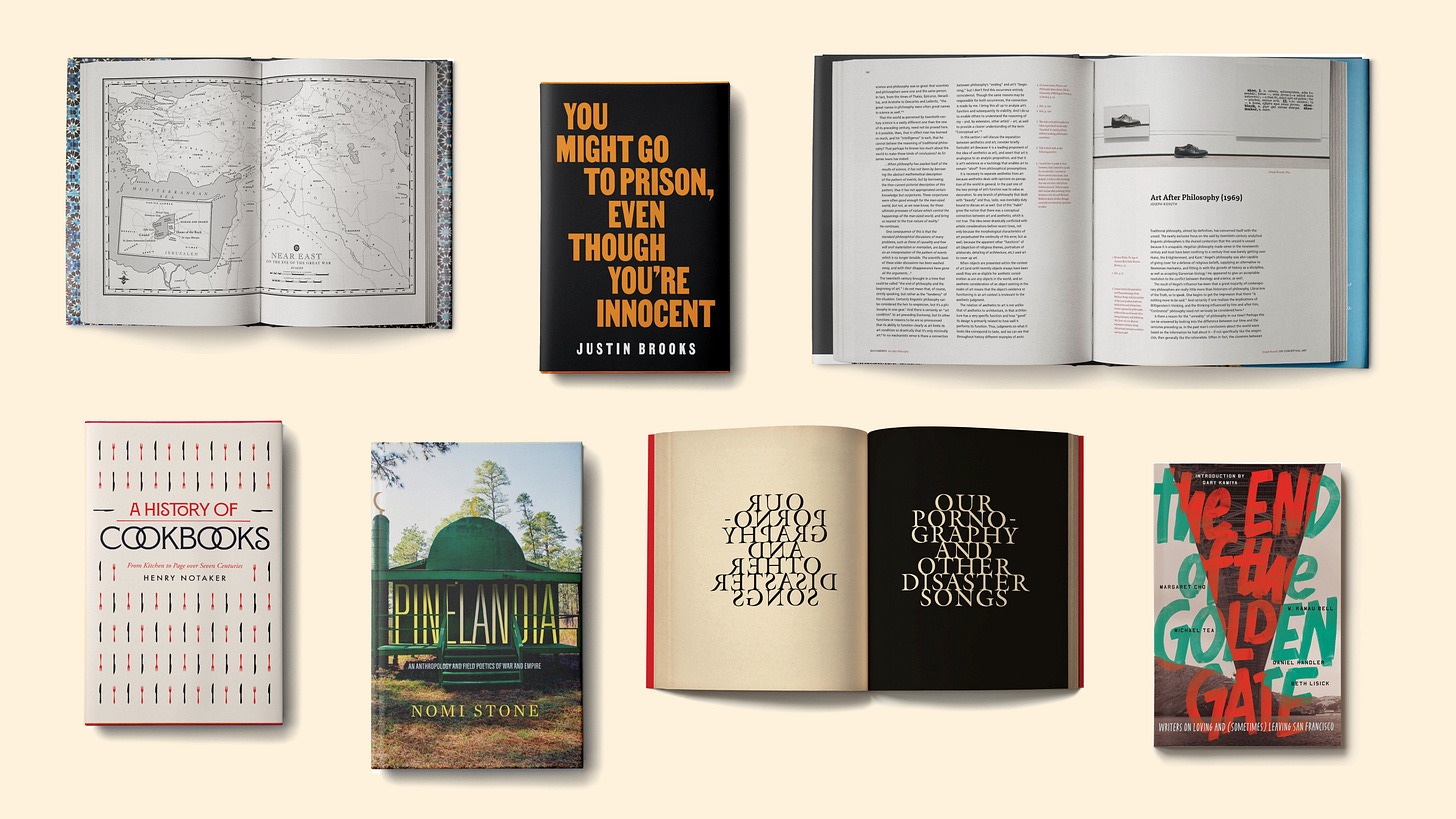
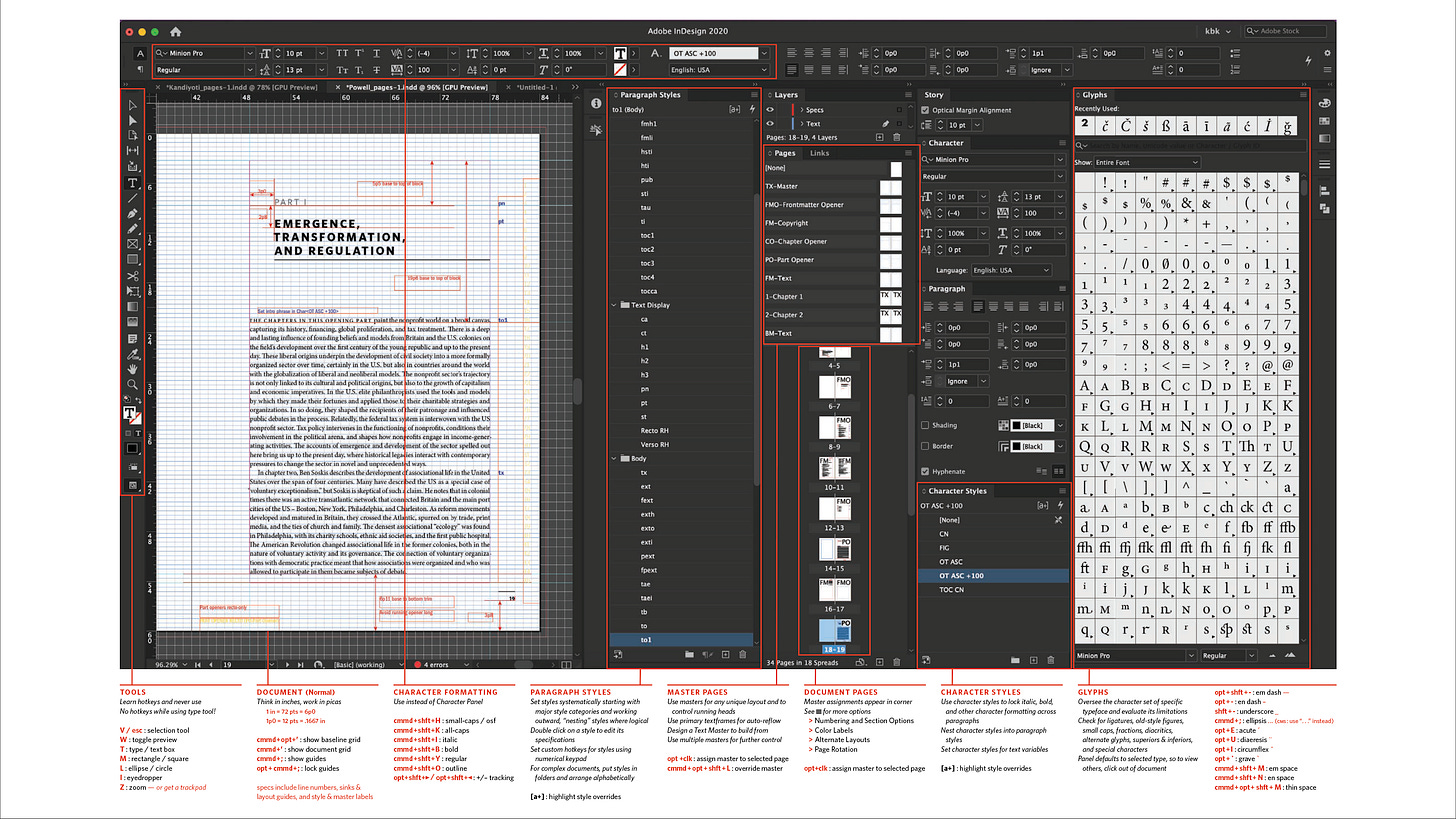
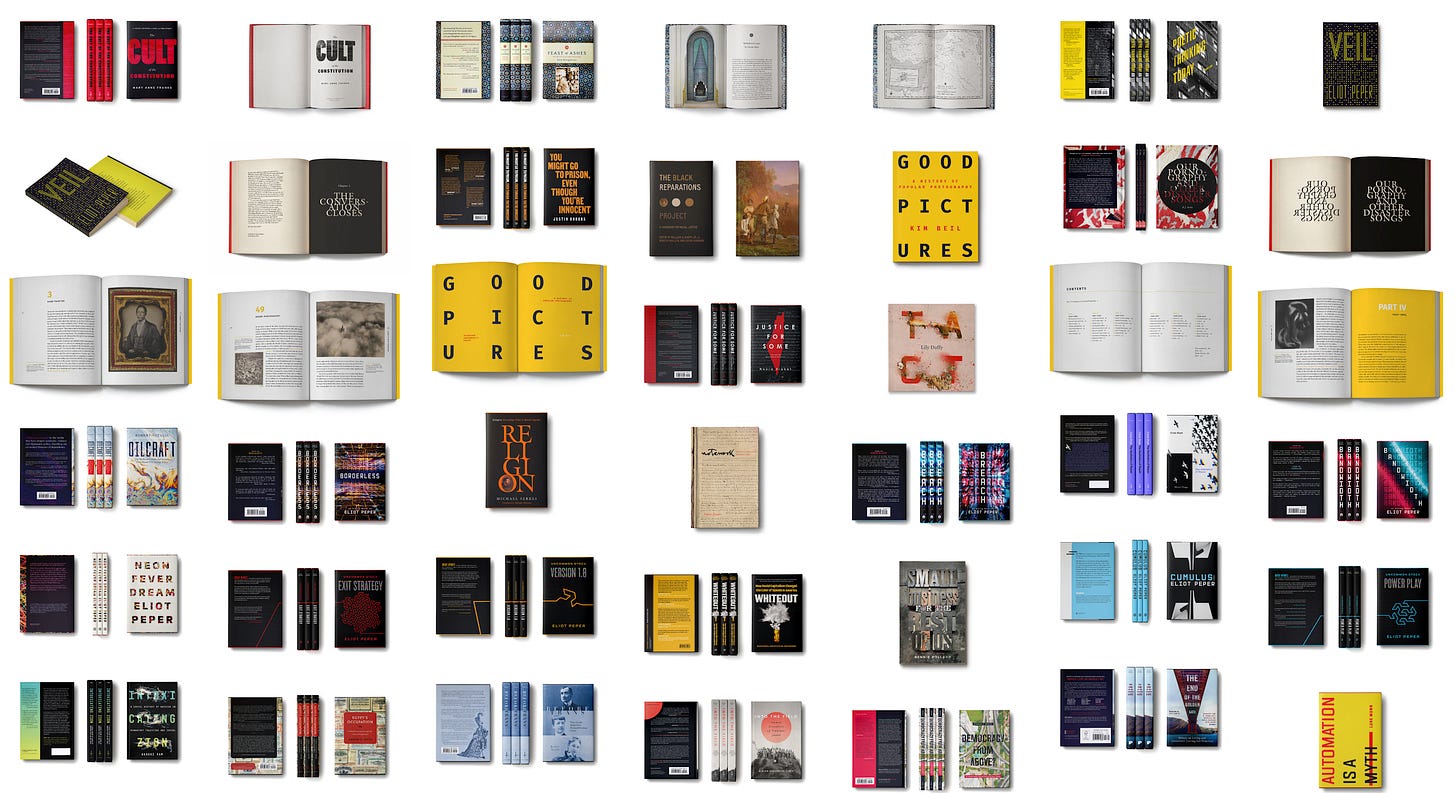
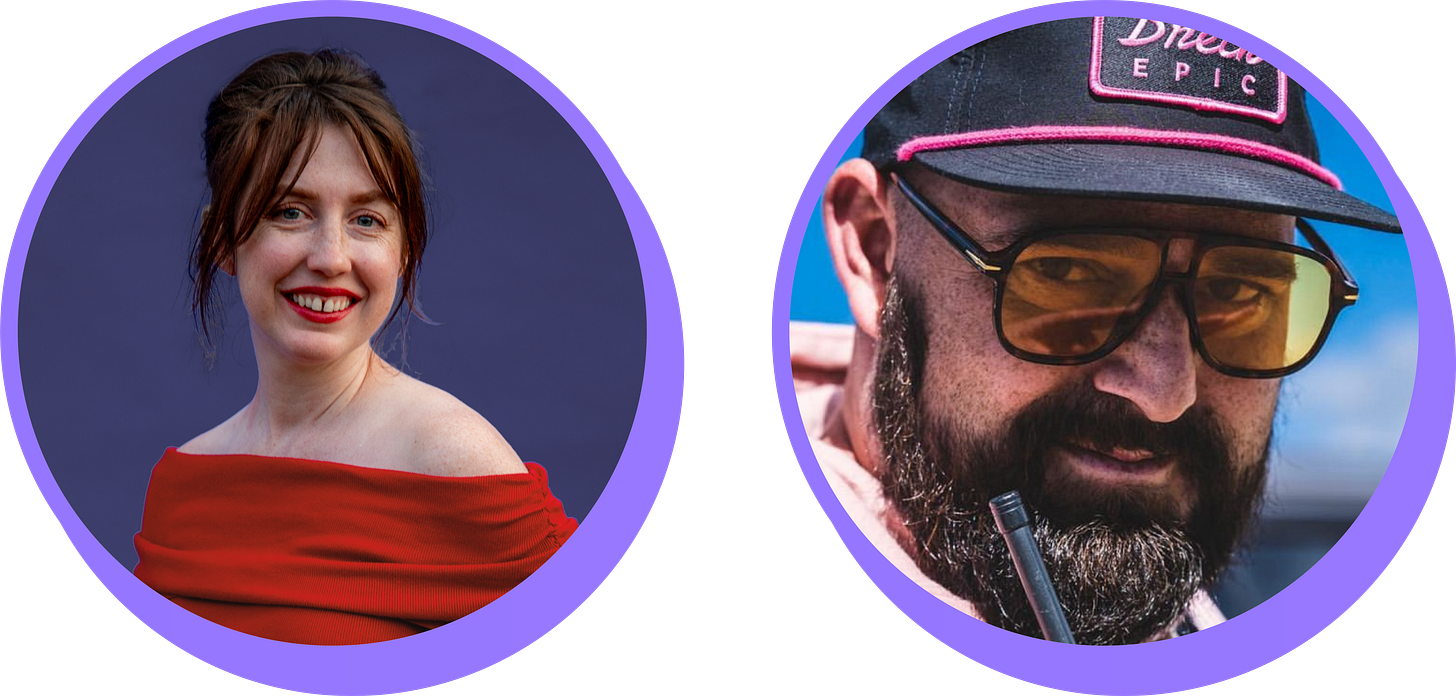
This is so cool, sounds like a great class!